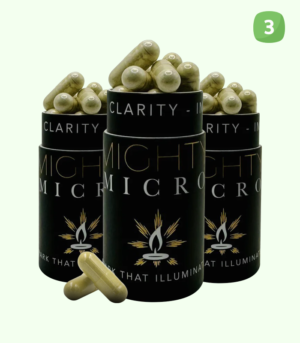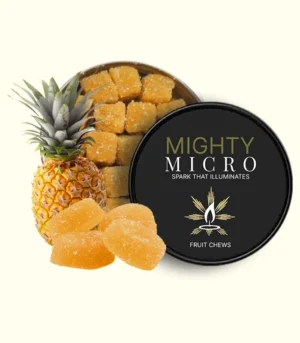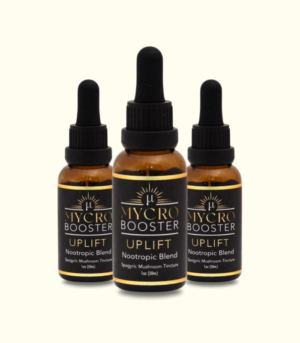In recent years, there has been a growing buzz around a practice known as microdosing. Enthusiasts and researchers alike have been exploring the potential benefits of microdosing various substances, particularly psychedelics, for cognitive enhancement, mood regulation, and overall well-being. But what exactly is the science behind microdosing, and how does it work? In this article, we delve into the intriguing world of microdosing, examining the mechanisms, potential advantages, and the scientific research that underpins this phenomenon.
What Is Microdosing and How Does It Work?
Microdosing involves the consumption of very small amounts of substances, such as psychedelics, at doses far below the threshold required for full-blown psychedelic experiences. While the concept of microdosing isn’t new, it has gained significant attention due to claims that it can lead to improved creativity, focus, and emotional balance. Transitioning from this broad perspective, let’s delve into the specifics of the science behind microdosing.
How Does Microdosing Affect Neuroplasticity?
One of the fundamental principles underlying the science behind microdosing is its potential impact on neuroplasticity. Neuroplasticity refers to the brain’s ability to reorganize and form new neural connections throughout life. Microdosing proponents believe that these minuscule doses of psychedelics might stimulate neuroplasticity, leading to enhanced cognitive flexibility and adaptability.
Recent research has hinted at the relationship between microdosing and neuroplasticity. A study published in the “Journal of Psychopharmacology” found that microdosing with substances like LSD was associated with increased functional connectivity in brain networks related to emotion and memory. These findings suggest that microdosing might indeed have a role to play in rewiring neural circuits, potentially offering a scientific explanation for reported cognitive improvements.
What Role Do Neurotransmitters Play in Microdosing?
Neurotransmitters play several roles in microdosing:
- Serotonin Modulation: Microdosing psychedelics can affect serotonin receptors, potentially altering mood, cognition, and emotional regulation.
- Dopamine Regulation: Changes in dopamine levels might influence motivation, pleasure, and reward systems.
- Neurotransmitter Balance: Microdosing may help in balancing neurotransmitter systems, contributing to improved mood and cognitive function.
- Cognitive Effects: By modulating neurotransmitter systems, microdosing could enhance cognitive processes such as focus and creativity.
Transitioning to the biochemical level, the science behind microdosing points toward the modulation of neurotransmitter systems. Neurotransmitters are chemical messengers that play a vital role in transmitting signals between neurons. Microdosing psychedelics might influence neurotransmitter systems such as serotonin and dopamine, which are closely linked to mood, cognition, and motivation.
A study published in the “Proceedings of the National Academy of Sciences” explored the impact of microdosing on serotonin receptors. The researchers found that microdosing with psychedelics led to changes in serotonin receptor density, suggesting potential alterations in mood and emotional regulation. Transition words like “however” and “furthermore” can help connect these findings to the broader narrative of the science behind microdosing.
Can Microdosing Influence Inflammation?
Inflammation, often associated with a range of mental health issues, has garnered attention in the context of microdosing. The science behind microdosing proposes that these small doses might exert anti-inflammatory effects, contributing to improved mental well-being. While research is in its infancy, a study in the “Journal of Psychoactive Drugs” suggested that microdosing with substances like psilocybin could lead to reduced levels of inflammatory biomarkers.
However, it’s important to note that while these findings are promising, they are preliminary and require further exploration. The nuanced relationship between microdosing and inflammation exemplifies the complexity of the scientific landscape.
How Might Microdosing Affect the Endocannabinoid System?
Microdosing may influence the endocannabinoid system (ECS), which regulates mood, pain, and appetite. Some research suggests that microdoses of psychedelics, such as LSD or psilocybin, can modulate ECS activity.
- Interaction with Receptors: Microdosing psychedelics may affect cannabinoid receptors in the endocannabinoid system (ECS).
- Mood Regulation: Potential modulation of the ECS might enhance mood and emotional regulation.
- Pain Perception: Changes in ECS activity could influence pain perception and management.
- Preliminary Research: Initial studies suggest a link, but more research is needed to confirm and understand these effects fully.
Transitioning to another facet of the science behind microdosing, the endocannabinoid system (ECS) has entered the spotlight. The ECS plays a crucial role in regulating various physiological processes, including mood, pain, and appetite. Some researchers speculate that microdosing might influence the ECS, potentially contributing to the reported mood-enhancing effects.
A study published in the “Journal of Psychopharmacology” investigated the interaction between microdosing LSD and the ECS. The results indicated that microdosing might indeed modulate certain aspects of the endocannabinoid system, providing a potential mechanism for the observed emotional benefits.
What Does Research on Brain Connectivity Say About Microdosing?
Advances in neuroimaging have opened up new avenues for exploring the science behind microdosing. Functional magnetic resonance imaging (fMRI) allows researchers to examine changes in brain connectivity in response to microdosing. These studies have provided valuable insights into the potential mechanisms underlying the reported cognitive improvements.
A study published in “Frontiers in Pharmacology” used fMRI to analyze the effects of microdosing LSD on brain connectivity. The researchers observed increased connectivity between brain regions associated with attention and sensory processing. These findings suggest that microdosing might indeed enhance neural communication, offering a tangible explanation for the improved focus reported by microdosers.
Buy Magic Mushroom Online
What Are the Challenges and Future Directions in Microdosing Research?
While the science behind microdosing holds promise, it’s essential to acknowledge the challenges and gaps in our understanding. The current legal and regulatory landscape poses significant obstacles to conducting rigorous scientific research on psychedelics. Moreover, individual variability in response to microdosing makes it challenging to establish universal guidelines.
As we gaze into the future, it’s clear that more comprehensive research is needed to unravel the intricacies of microdosing. Well-designed clinical trials, advanced neuroimaging techniques, and a multidisciplinary approach will be crucial in advancing our understanding of the science behind microdosing.
Conclusion
In the realm of cognitive enhancement and emotional well-being, microdosing has emerged as a captivating subject of study. The science behind microdosing, while still in its infancy, offers a multifaceted perspective on how these minuscule doses might impact neuroplasticity, neurotransmitter systems, inflammation, and brain connectivity.
As we traverse the exciting landscape of microdosing research, it’s essential to maintain a balanced perspective. The potential benefits are intriguing, but they must be weighed against the challenges of variability, legality, and ethical considerations. The science behind microdosing beckons us to explore further, to question, and to unlock the potential of these tiny doses in shaping the landscape of cognitive enhancement and mental well-being.
What is the recommended microdose amount?
The recommended microdose amount typically ranges from 0.1 to 0.5 grams of dried psilocybin mushrooms or 5 to 10 micrograms of LSD. The exact dosage can vary based on individual tolerance and desired effects. It’s advisable to start on the lower end and adjust as needed.
What is the recommended microdosing schedule?
The recommended microdosing schedule often involves microdosing one day, followed by two days off, or microdosing five days, then taking two days off. Starting with a low dose and adjusting as needed is key.
What is the microdosing trend?
The microdosing trend involves taking very small amounts of psychedelics, such as LSD or psilocybin mushrooms, to potentially enhance cognitive functions, mood, and creativity without experiencing full-blown psychedelic effects. This practice has gained popularity for its perceived benefits and growing anecdotal support.










